- The Culture Explorer
- Posts
- Hanukkah - The Jewish Festival of Lights
Hanukkah - The Jewish Festival of Lights
Hanukkah, also known as the Festival of Lights, is one of the most widely recognized Jewish holidays. While it is not as religiously significant as other Jewish observances such as Yom Kippur or Passover, Hanukkah holds profound historical and cultural importance. Celebrated over eight days, it commemorates a critical moment in Jewish history—a story of resilience, faith, and the triumph of light over darkness.

Dreidels, Hanukkah menorah, and sufganiyot. Photo by YB13D - Own work, CC BY-SA 4.0.
The origins of Hanukkah date back to the second century BCE, during a turbulent period in Jewish history. Judea, the ancient homeland of the Jewish people, was under the control of the Seleucid Empire, a Hellenistic state that sought to impose Greek culture and religious practices on its subjects. King Antiochus IV, a particularly oppressive ruler, outlawed Jewish religious practices and desecrated the Second Temple in Jerusalem by erecting an altar to Zeus and sacrificing pigs there. This provoked a widespread uprising led by the Maccabees, a group of Jewish rebels.

A model of Jerusalem during the Second Temple Period. Photo by Berthold Werner. Public Domain.
The Maccabees, led by Judah Maccabee and his brothers, launched a guerrilla warfare campaign against the much larger Seleucid army. Despite their smaller numbers and limited resources, the Maccabees succeeded in reclaiming Jerusalem and rededicating the desecrated temple. This victory is celebrated as a symbol of Jewish resilience and the defense of religious freedom.

The Triumph of Judas Maccabeus by Peter Paul Rubens (1634–1636)
One of the most well-known aspects of the Hanukkah story is the miracle of the oil. According to Jewish tradition, when the Maccabees sought to rededicate the temple, they found only a single day's worth of ritually pure oil to light the menorah, the temple’s eternal flame. Miraculously, this small amount of oil burned for eight days, allowing enough time to prepare a fresh supply of consecrated oil. This event is considered a divine intervention and is central to the holiday’s observance.

Maccabees on the Knesset Menorah. By Deror avi - Own work, CC BY-SA 3.0.
The lighting of the menorah is the most iconic and cherished tradition of Hanukkah. Each night, families light an additional candle on a nine-branched candelabrum called a hanukkiah. The central candle, known as the shamash, is used to light the others. This ritual symbolizes the miracle of the oil and serves as a reminder of the enduring power of faith and hope. Blessings are recited, and traditional songs are sung during the lighting ceremony.

Boy in front of a menorah. Photo by ארכיון השומר הצעיר יד יערי - Hashomer Hatzair Archives Yad Yaari, CC BY 2.5.
Food plays an essential role in Hanukkah celebrations, with dishes often fried in oil to honor the miracle of the oil. Latkes, or potato pancakes, and sufganiyot, jelly-filled donuts, are popular treats enjoyed during the holiday. These foods are shared with family and friends, fostering a sense of community and joy.

Sufganiyot/doughnuts filled with strawberry jelly. Photo by Naom Furer. Public Domain.
Hanukkah is also a time for games and giving. Children often play with a dreidel, a spinning top marked with Hebrew letters that stand for the phrase "A great miracle happened there." In addition to this playful tradition, it is customary to give gifts or gelt (small amounts of money or chocolate coins) to children, adding to the festive atmosphere. These practices have evolved over time, with gift-giving becoming more prominent in modern celebrations, particularly in regions where Hanukkah coincides with the Christmas season.

Dreidels in a Jerusalem market. By Adiel lo - Own work, CC BY-SA 3.0.
The significance of Hanukkah extends beyond its historical roots. It serves as a powerful reminder of the importance of religious freedom and cultural identity. For Jewish communities around the world, it is a time to celebrate their heritage, connect with their faith, and pass down traditions to future generations. The holiday’s themes of resilience, unity, and light resonate universally, making it a celebration with lessons for people of all backgrounds.

Second night of Hannukah at Jerusalem's Western Wall.
Hanukkah is a festive holiday filled with candles, songs, and delicious food. It is a profound commemoration of a pivotal moment in Jewish history, marked by courage, faith, and divine intervention. Through its rituals and traditions, Hanukkah continues to illuminate the enduring spirit of the Jewish people and their unwavering commitment to preserving their identity and beliefs. As families gather to light the menorah each year, they not only celebrate a historical miracle but also reaffirm the timeless values of hope and resilience that define the holiday.
“It’s fun to do the impossible.”
Did you know there was a time when America was Art Deco, a blend of elegance and precision, marked by soaring towers and unshakable optimism?
What happened to that spirit? 🧵
— Culture Explorer (@CultureExploreX)
6:00 PM • Dec 18, 2024
December is more than just Christmas! It’s a month filled with cultural and religious celebrations worldwide. Here’s a quick rundown of notable holidays celebrated in December:
St. Nicholas Day (Dec. 5 or 6): Honoring Saint Nicholas, the inspiration behind Santa Claus, for his generosity and gift-giving.

A depiction of Saint Nicholas, Bishop of Myra, giving dowry money to three poor girls. Photo by Master of Jean Rolin II.
Immaculate Conception Day (Dec. 8): Catholics celebrate the Virgin Mary, believed to be born free of original sin.
Bodhi Day (Dec. 8): Buddhists mark the Buddha’s enlightenment with meditation.
Feast of Our Lady of Guadalupe (Dec. 12): Mexicans honor the Virgin Mary, with millions visiting her shrine in Mexico City.
Hanukkah (Dec. 25–January 2): The Jewish Festival of Lights celebrates a miraculous oil lasting eight days with menorah lightings, latkes, and dreidels.
Yule (Dec. 21–Jan. 1): Wiccans and Pagans celebrate the winter solstice, marking the return of longer days with yule log traditions.
Christmas (Dec. 25): Celebrating Jesus’ birth, it’s embraced as a religious and secular holiday with gift-giving and Santa Claus excitement.
Boxing Day (Dec. 26): Originating in Britain, it started as a day for giving gifts to workers and is now a commercial holiday.
Kwanzaa (Dec. 26–Jan. 1): A cultural celebration of African-American heritage focusing on seven principles like unity and creativity.
Zarathosht Diso (Dec. 26): Zoroastrians commemorate the death of Prophet Zoroaster with prayers at fire temples.

Atash Behram at the Fire Temple of Yazd in Iran
New Year’s Eve (Dec. 31): Worldwide celebrations welcome new beginnings with parties, resolutions, and fireworks.
From honoring traditions to welcoming new starts, December is packed with meaningful celebrations across cultures.
Art

‘Springtime” by Claude Monet (1872) at the Walters Art Museum, Baltimore.
Behold the Parthenon.
Its more than a megalithic masterpiece.
Its 2,500 years of enduring genius.
Let's unlock its secret—optical illusions, sacred geometry, and acoustics— that will blow your mind: 🧵
— Classical Aegis (@ClassicalAegis)
3:45 PM • Dec 18, 2024
Art
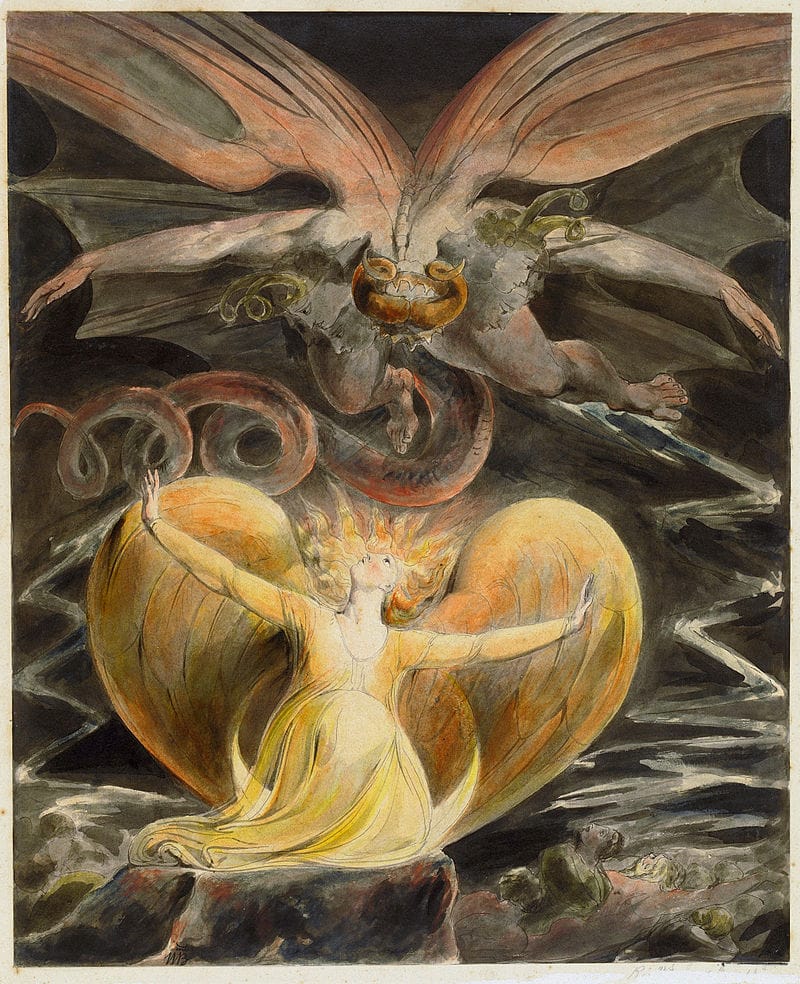
The Great Red Dragon and the Woman Clothed with the Sun by William Blake at the National Gallery, London.
William Blake’s The Great Red Dragon and the Woman Clothed with the Sun is a striking depiction of a biblical scene from the Book of Revelation. Painted between 1805 and 1810, it captures the dramatic confrontation between a towering, muscular dragon and a radiant woman clothed in light. The dragon, with its sinuous body, enormous wings, and intense expression, embodies raw, otherworldly menace, while the woman symbolizes divine protection and purity. Blake’s mastery of form and contrast intensifies the painting’s apocalyptic tension, with swirling colors and dynamic composition emphasizing the celestial struggle.
Architecture
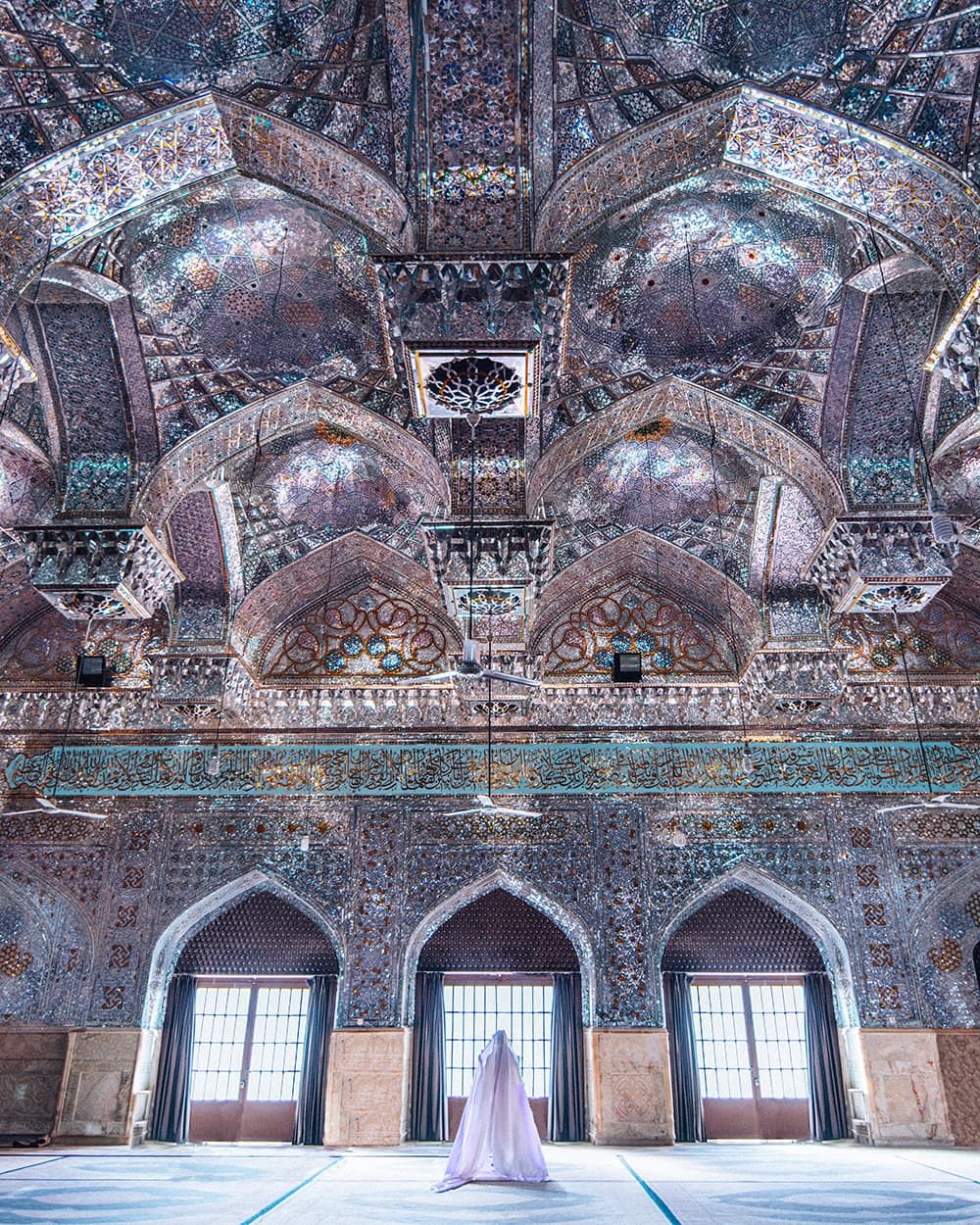
Sayyed Alaeddin Hossein Shrine, Shiraz, Iran
The Sayyed Alaeddin Hossein Shrine in Shiraz, Iran, is a stunning example of Persian spirituality and artistry. This mausoleum is dedicated to Alaeddin Hossein, the brother of Imam Reza, a revered figure in Shia Islam. Its interior is captivating, with walls and ceilings adorned in intricate mirror work that reflects light in a mesmerizing display of colors. The golden dome and turquoise tiles on the exterior add to its splendor, making it a must-see landmark in Shiraz. Whether you visit for spiritual reasons or to appreciate its architectural beauty, this shrine leaves a lasting impression.
Travel
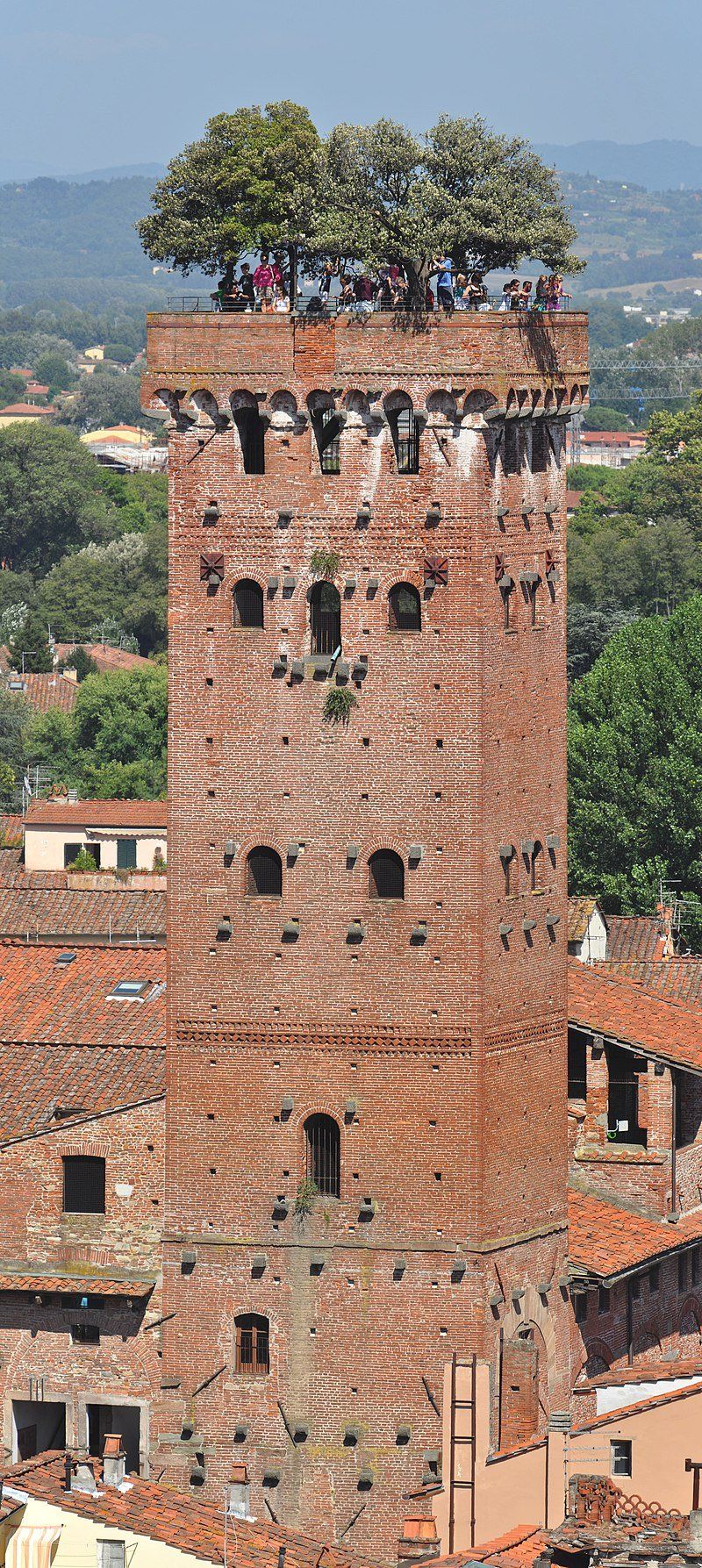
Guinigi Tower, Lucca, Tuscany. Photo By H005 - Wikimedia, Public Domain.
The Guinigi Tower, located in Lucca, Italy, is a striking example of medieval architecture with a unique feature that sets it apart: a rooftop garden filled with ancient holm oak trees. Built in the 14th century by the Guinigi family, a prominent merchant dynasty, the tower symbolized their wealth and influence. Standing 45 meters tall, it offers panoramic views of Lucca’s historic cityscape, including its well-preserved Renaissance walls. The rooftop garden, a rarity in medieval towers, was designed as a private sanctuary and represents a blend of architectural ingenuity and a reverence for nature. Today, the Guinigi Tower is a cherished landmark, inviting visitors to climb its 232 steps for both the breathtaking view and a glimpse into Lucca's rich history.
Food
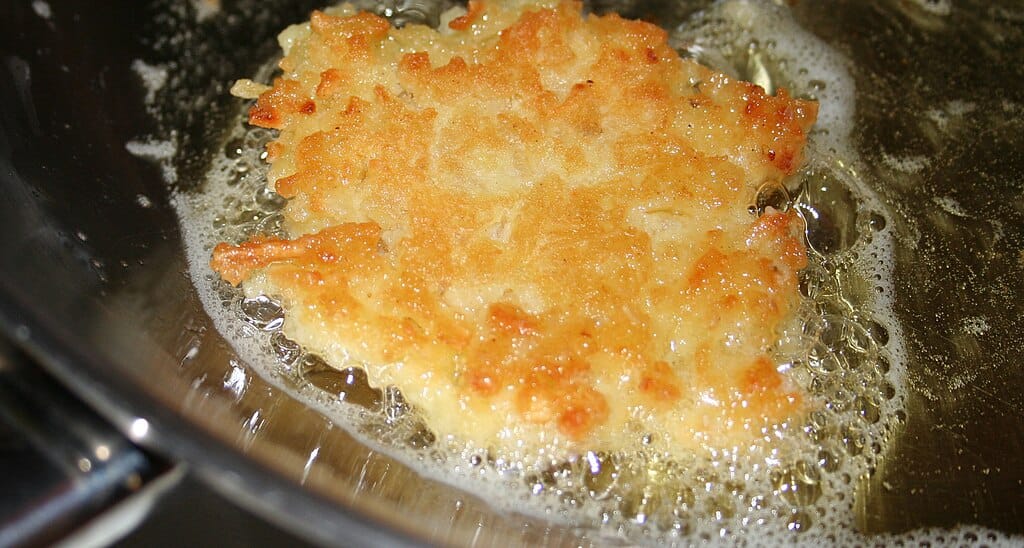
Potato latke frying in hot olive oil.
Classic Hanukkah Potato Latkes Recipe
Here’s a simple and delicious recipe for crispy, golden potato latkes, perfect for celebrating Hanukkah!
Ingredients:
4 large potatoes (Russet or Yukon Gold work well)
1 medium onion
2 large eggs
1/3 cup all-purpose flour (or matzo meal for a traditional option)
1 teaspoon salt
1/4 teaspoon black pepper
Olive oil (for frying)
Instructions:
Peel the potatoes and onion, then grate them using a box grater or food processor. Place the grated mixture in a clean kitchen towel or cheesecloth and squeeze out as much liquid as possible.
In a large bowl, combine the grated potatoes and onion with eggs, flour, salt, and pepper. Stir until the mixture is evenly combined.
In a large skillet, heat about 1/4 inch of olive oil over medium-high heat. To test if the oil is ready, drop a small bit of the potato mixture into the pan—it should sizzle immediately.
Using a tablespoon or your hands, scoop small portions of the mixture into the skillet, pressing them down to form patties about 1/4 inch thick. Fry for 2-3 minutes per side or until golden brown and crispy. Don’t overcrowd the pan; work in batches if needed.
Transfer the fried latkes to a plate lined with paper towels to drain excess oil. Keep them warm in a low oven (about 200 degrees Fahrenheit) if frying in batches.
Traditional toppings include applesauce, sour cream, or even smoked salmon. Enjoy them fresh and hot!
These crispy latkes are best enjoyed straight from the pan, making them a delightful addition to your Hanukkah celebration!
Costume
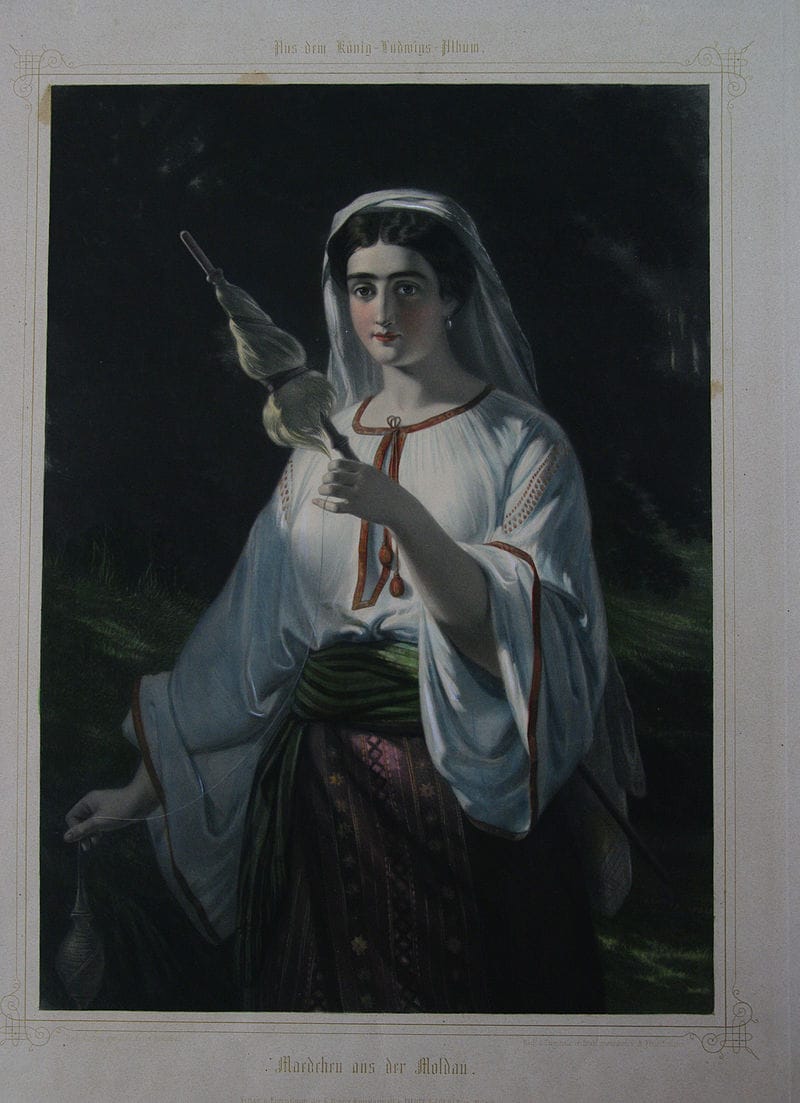
Traditional costume of Romania - Western Moldavia
Traditional Romanian clothing is a vibrant expression of the country’s rich cultural heritage, often associated with rural life and national identity. The outfits vary by region but share common elements, such as intricately embroidered shirts (ia for women and cămașă for men), woolen vests, and colorful skirts or trousers. The patterns and colors of the embroidery often signify the wearer’s region, age, and marital status. These garments are typically handmade, reflecting a deep connection to local craftsmanship and traditions. Traditional attire is still worn during festivals, weddings, and other cultural celebrations, serving as a symbol of Romanian pride and unity.
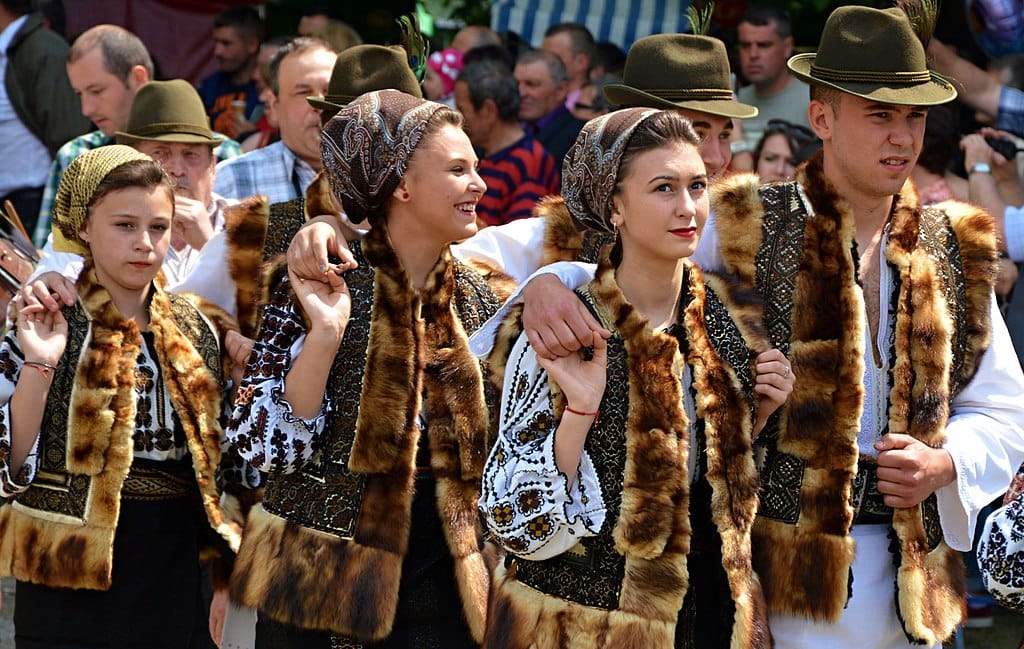
Romanian teens in traditional clothes are dancing. Photo by ShadowNighy - Own work, CC BY-SA 4.0.

Reply